Black Widow
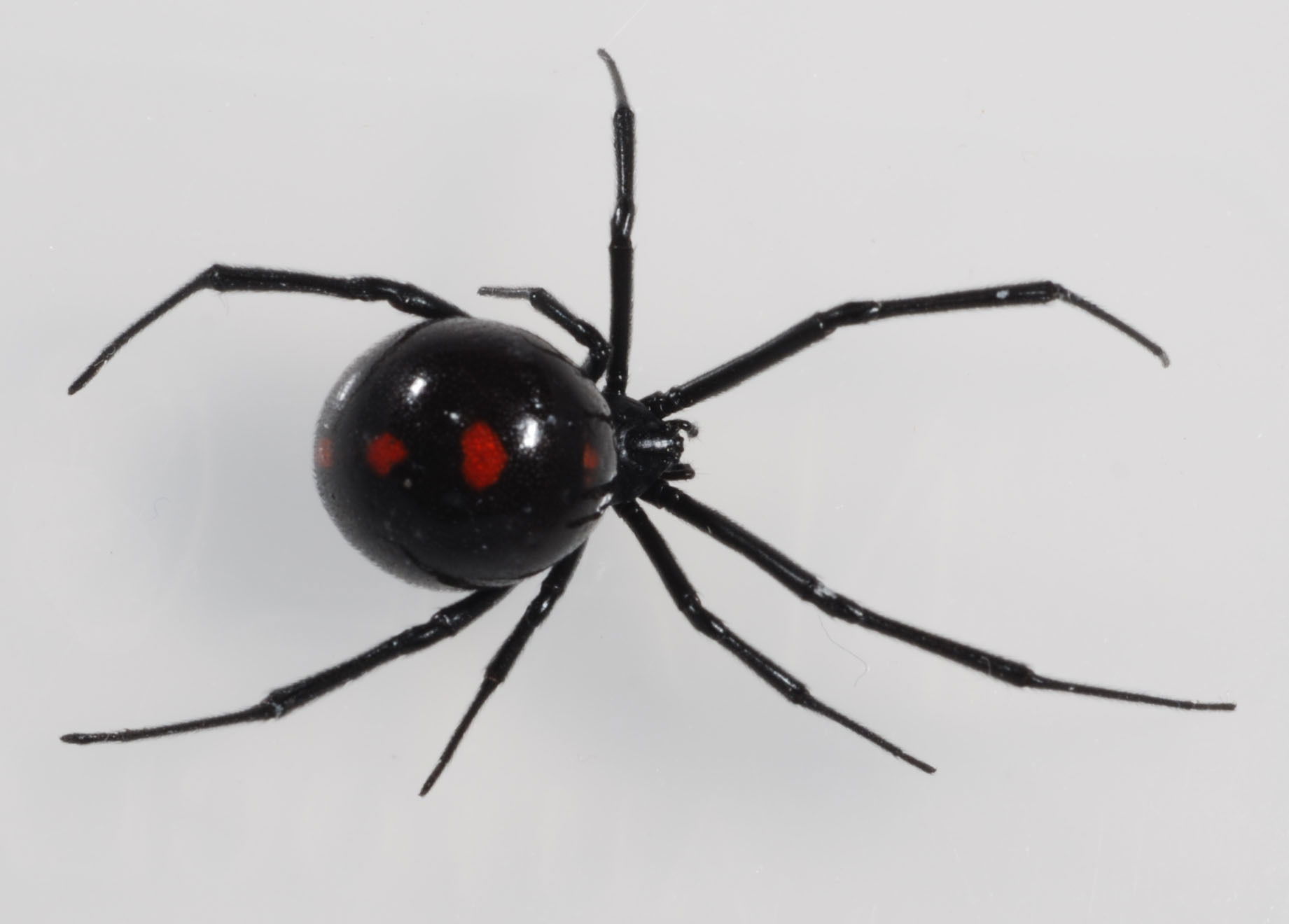
BLACK WIDOW:
KPCOFGS:
Kingdom: Animalia
Phylum: Arthropoda
Class: Arachnida
Order: Araneae
Family: Theridiidae
Genus: Latrodectus
Species: (32 species)
Nº of Species:
There is a total of 32 species of Black widows (from genus Latrodectus), although the some ones are:
Latrodectus antheratus -- (Paraguay and Anrgentina)
Latrodectus apicalis -- (Galapagos Islands)
Latrodectus bishopi -- (USA)
Latrodectus corallinus -- (Argentina)
Latrodectus elegans -- (India, Myanmar, Thailand, China and Japan)
SIZE:
Black widow spiders range from
5 mm to 15 mm (0.25 to 0.50 inch) in length.
Adult black widow males are harmless and about half the female's size. (2.5 mm to 7.5 mm (0.125 to 0.25 inch) in length)
They usually have yellow and red bands with spots on their backs.
LIFE SPAN & REPRODUCTION INFO:
- After hatching, it takes from 2 to 4 months for spiders from the genus Latrodectus to grow enough to breed. However, full maturation usually takes from 6 to 9 months.
- Females can live up to 5 years! But males may not be so lucky to last that much.
- After mating, the females black widow, which is double the size of the male, may eat the male, although there are cases where this phenomenon does not take place. Therefore, males must be intelligent and fast if they want to survive to mate again.
- To better understand the difficulty of the male to escape after mating, you may want to see the following video:
https://www.youtube.com/watch?v=zXvd6WzJn7U
- You can clearly see that even there are on a jar, the female attempted the male before this could make it to the lining of the container.
EGG to ADULT:
- Black widows will produce about 4 to 9 sacs of eggs, each containing between 20 and 900 eggs.
- These eggs will hatch in 14 to 30 days, but only 1 to 12 of them will survive due to cannibalism.
- They will instantaneously leave the web after they have hatched.
- The eggs are oval, brown and papery (like paper wasp nests) and about half inch long.
SPIDERWEB INFO & PATTERNS:
· Black widows and other spiders from the family Theridiidae usually weave irregular webs, although they still do their job. This means that the webs do not follow any pattern.
· These webs are very strong and resist leaves falling from trees, as they are usually located near the floor. Once the web is finished, the black widow will hang upside down waiting for prey.
· Webs from spiders within this family are not flat, as they usually weave it randomly, therefore they can protect themselves from predators, (e.g. giant
BITE & DEFENSE MECHANISMS:
- The bite from spiders of this Genus, contains a neurotoxin named latrotoxin. This means that the venom affects gravely the nervous system. Latrotoxin is responsible for the symptoms of latrodectism.
- The primary toxin found in black widow's venom is alpha-Latrotoxin. This binds irreversebly to protein receptors on presynaptic neurons and makes Ca2+ (calcium) permeable channels on the lipid bilayers (membranes).
- The influx of these ions results in a massive exocytosis (goes out) of neurotransmitters, including acetylcholine, dopamine, norepinephrine, epinephrine and glutamate-
- The release of this neurotransmitters causes pain, muscle rigidity, vomiting and sweating.
- Moreover, victims of this bite may suffer long-term effects such as pain or muscle spasms, however, this is a rare phenomenon. Also, systemic toxicity includes abdominal pain and autonomic dysfunction, which is usually temporary.
- The recovery from a bite is usually completed within 24 to 48 hours.
- The venom of a female black widow is extremely potent (15 times more potent than that of a rattlesnake), however, the dose injected into victims is not usually enough to kill a human. Less it is that of a male, as being smaller involves having smaller "chelicerae" (commonly referred as jaws) which prevents it from penetrating the skin to a depth as dangerous as the female can get to.
INTERESTING FACTS:
- These small spiders have a very potent venom which contains the neurotoxin latrotoxin, which causes the condition latrodectism, both named after the genus, (Latrodectus).
- Like many other species in the animal kingdom, spiders eat their siblings when they have already hatched and are still inside the egg sacs. This is similar to the behavior of viviparous sharks, who will eat their siblings (still inside mother) to grow more (being the strongest) and having more chances of surviving in the ocean.
LOCATION MAP:

This location map includes all the species of black widows.
PHOTO:
Photos of species named at top of the page, by order:
Latrodectus antheratus:
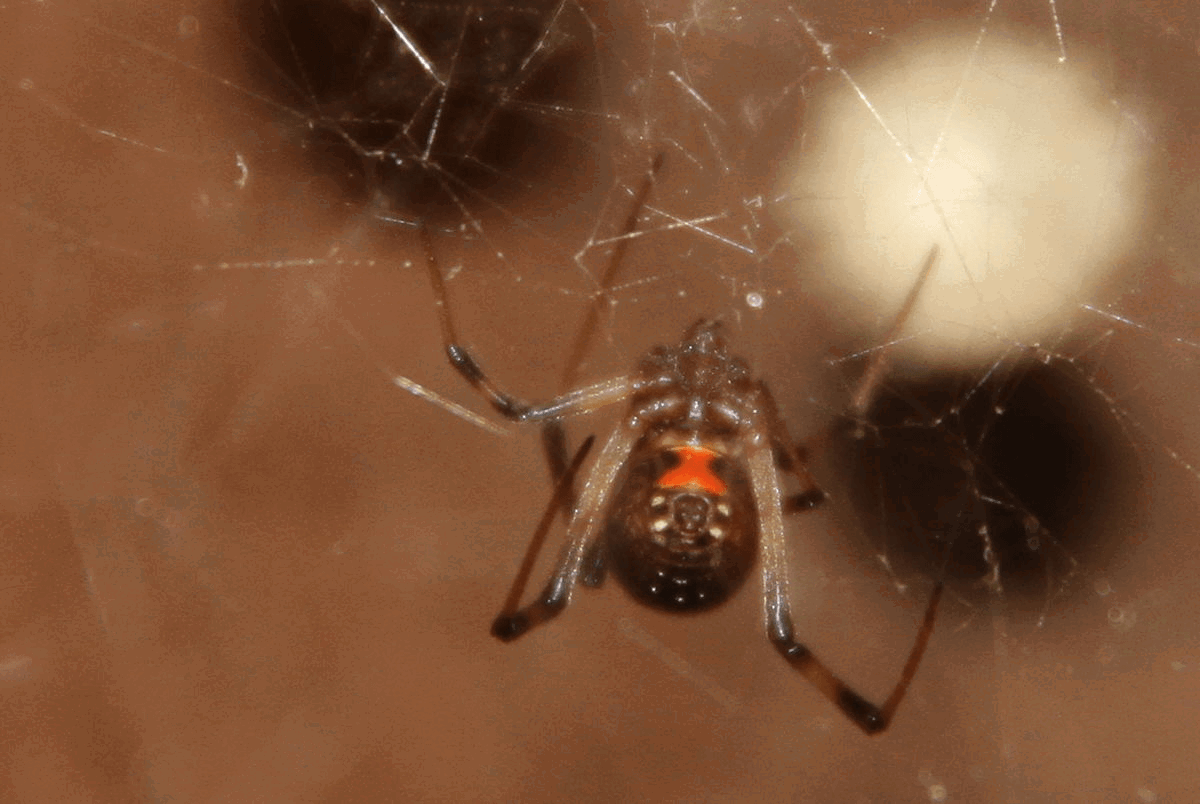
Latrodectus apicalis:
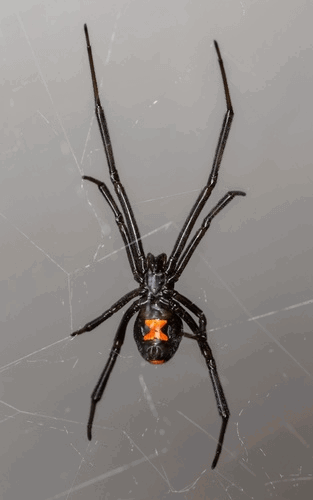
Latrodectus bishopi:
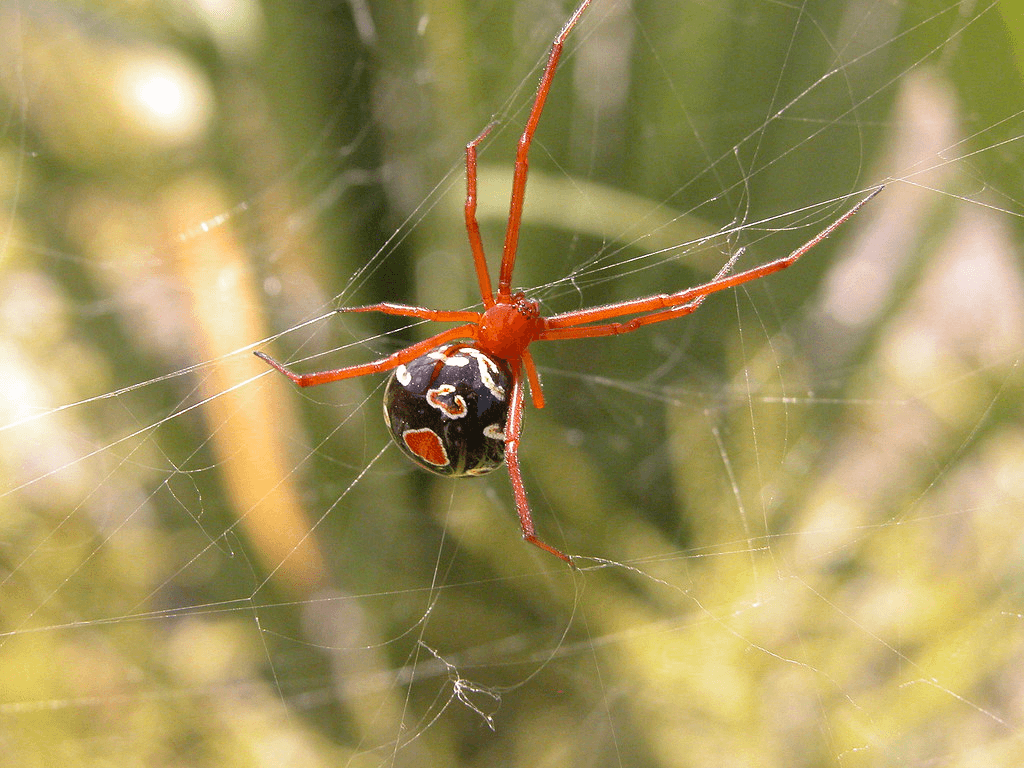
Latrodectus corallinus:
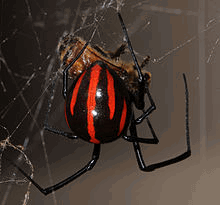
Latrodectus elegans:
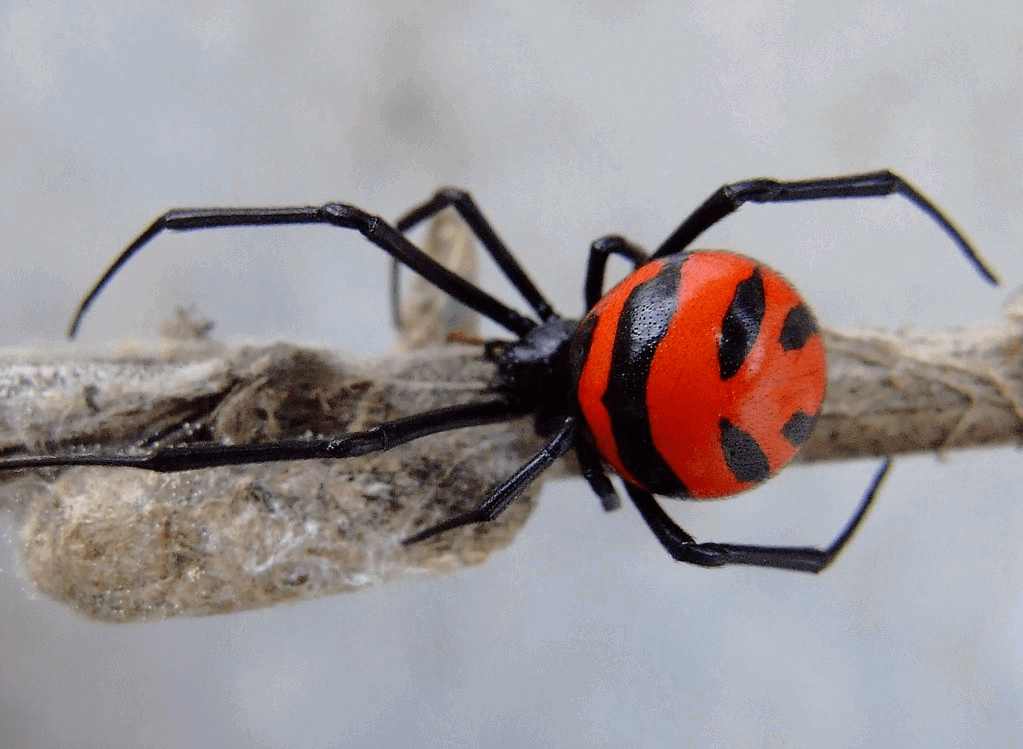
(For more information about the websites consulted in this article, see the Bibliography at the bottom of the website.)
